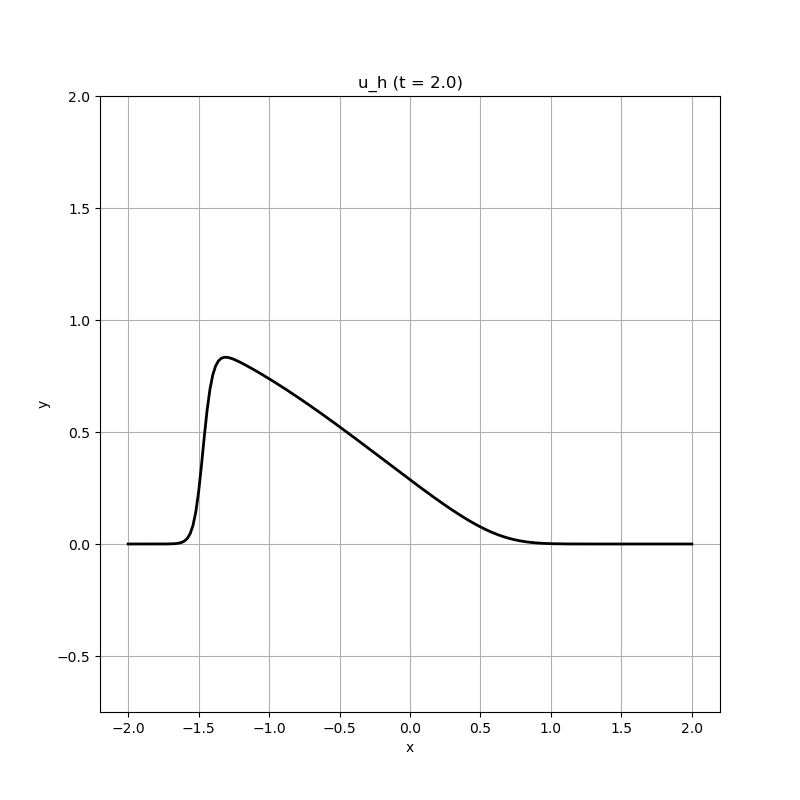103 : Burger's Equation 1D
This example solves the Burger's equation
\[\begin{aligned} u_t - \mu \Delta u + \mathrm{div} f(u) & = 0 \end{aligned}\]
with periodic boundary conditions.
module Example103_BurgersEquation1D
using GradientRobustMultiPhysics
using ExtendableGrids
using GridVisualize
const f = (result, u) -> (result[1] = u[1]^2/2;) # kernel for nonlinearity
const u0 = DataFunction((result,x) -> (result[1] = abs(x[1]) < 0.5 ? 1 : 0), [1, 1]; dependencies = "X", bonus_quadorder = 4) # initial height
# everything is wrapped in a main function
function main(; verbosity = 0, ν = 1e-2, h = 0.02, T = 2, order = 2, τ = 5//100, Plotter = nothing)
# set log level
set_verbosity(verbosity)
# load mesh and exact solution
xgrid = simplexgrid(-2:h:2)
# set finite element types [surface height, velocity]
FEType = H1Pk{1,1,order}
# generate empty PDEDescription for three unknowns (h, u)
Problem = PDEDescription("Burger's Equation")
add_unknown!(Problem; unknown_name = "u", equation_name = "Burger's Equation")
add_operator!(Problem, 1, NonlinearForm(Gradient, [Identity], [1], f, [1,1]; name = "(f(#A),∇#T)", newton = true, bonus_quadorder = 2))
add_operator!(Problem, [1,1], LaplaceOperator(ν))
add_constraint!(Problem, CombineDofs(1, 1, [1],[num_nodes(xgrid)]))
@show Problem
# prepare solution vector and interpolate u0
Solution = FEVector("u_h", FESpace{FEType}(xgrid))
interpolate!(Solution[1], u0)
# init plotter and plot u0
p = GridVisualizer(; Plotter = Plotter, layout = (1,1), clear = true, resolution = (800,800))
scalarplot!(p[1,1], xgrid, nodevalues_view(Solution[1])[1], flimits = (-0.75,2), levels = 0, title = "u_h (t = 0)")
# configure time-dependent solver
TCS = TimeControlSolver(Problem, Solution, BackwardEuler;
timedependent_equations = [1],
maxiterations = 10,
show_iteration_details = true,
T_time = typeof(τ))
# advance in time
function do_each_timestep(kwargs...)
scalarplot!(p[1,1], xgrid, nodevalues_view(Solution[1])[1], flimits = (-0.75,2), levels = 0, title = "u_h (t = $(Float64(TCS.ctime)))")
end
advance_until_time!(TCS, τ, T; do_after_each_timestep = do_each_timestep)
end
endThis page was generated using Literate.jl.
